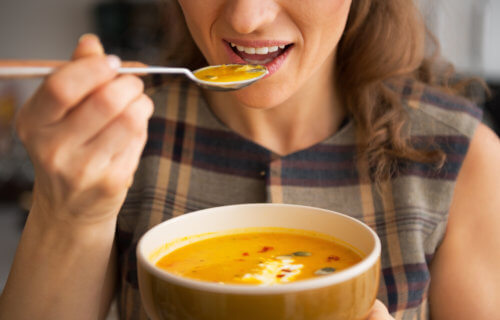NEW YORK — Can’t go a day without a bag of peanuts or a granola bar to munch on at some point? It turns out nearly every American needs a mid-afternoon snack.
According to a poll of 2,000 Americans between the ages of 18 and 41 (1,125 Gen Zers and 875 millennials), only three percent claim they don’t eat snacks at all. Meanwhile one in four (26%) respondents snack most frequently in the early afternoon, making it the most preferred snack time — particularly among millennials when compared to Gen Z (33% vs 21%).
Why we get the munchies
Sixty-eight percent admit they reach for snacks more frequently in times of anxiety or stress. That could be why two-thirds find themselves snacking more now than they did before the start of the pandemic. Those who snack with a specific purpose in mind are typically looking for an energy boost (42%), some extra calories (33%) or protein (33%).
The poll, conducted by OnePoll on behalf of National Peanut Board in honor of National Peanut Month in March, finds that 57 percent of respondents confess to snacking regularly before meals. But three in four snackers stop at least an hour ahead of their next meal.
Americans are strong-willed when it comes to avoiding midnight snacks, too. Just two percent of respondents say they reach for a late-night bite.
Results also reveal that 63 percent prefer their food to have “a little kick.” To that end, 36 percent of Gen Zers and 41 percent of Millennials are challenging themselves to try more spicy foods during the pandemic. In fact, close to half of peanut-eaters (47%) enjoy adding some spice to the mix.
Almost half (47%) of all respondents prefer a snack with some crunch. Results show that 49 percent of millennials favor crunchy, versus slightly fewer Gen Zers (46%). And when searching for new snack inspiration, 42 percent of respondents head to social media. “Spice has become a huge food trend,” says Ryan Lepicier, senior vice president and chief marketing officer at the National Peanut Board. “It could be because Gen Z and millennials are being inspired for new snack ideas by global social media platforms like Facebook, Instagram and TikTok.”
The dividing line between meal and snack
When asked to categorize certain foods into either snacks, meals or both, respondents are divided. For example, is soup a meal? The results say no, as only 45 percent of respondents consider it hearty enough to qualify. Classics like peanut butter and jelly sandwiches are just as debatable. Two in five people categorize it as a snack, but 39 percent call it a meal.
One-third of respondents think they could make a meal out of nothing but peanuts, compared to half who believe the legume to be snack material only.
However, what Gen Z and Millennials agree on is that the most common way to distinguish a snack from a meal: namely, is that a snack can be eaten on-the-go (37%) and a meal can’t. Respondents also define snacks as foods that don’t require prep time or cooking (35%), and claim that meals are more difficult to find time for (35%).
When asked about their favorite strange snack pairings, 23 percent praised the combination of peanut butter and pickles, putting it towards the top of the list.
“Smart snack choices deliver a boost of energy, and satisfy cravings to keep you fuller longer,” says Sherry Coleman Collins, MS, RDN, LD. “Peanuts deliver seven grams of protein and good fat, and are a good source of fiber. They are a crunchy, nutritious, affordable, on-the-go snack option.”
